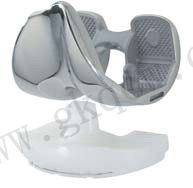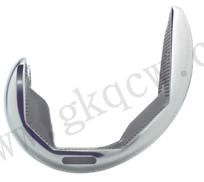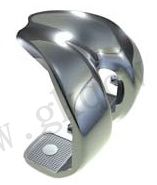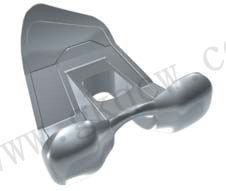 |
 |
|
Scorpio with Polyethylene Insert |
Scorpio PS Femoral Component Side View |
 |
 |
|
Scorpio Femoral Component |
Column 3 |
Key features include:
(1)Reduced wear:
The Scorpio Knee System achieves high performance primarily through improved design kinematics combined with X3 Advanced Bearing Technology. As a pioneer in wear performance technologies, Stryker offers bearing surface improvements. While recent bearing technologies have been applied to hips and have helped to improve hip bearings, they have not been widely applied to knee bearings until now.
The Scorpio Knee System with X3 simultaneously delivers the following:
1)Strength preservation;
2)Wear performance improvement;
3)Oxidation resistance;
(2)Full active extension:
The Scorpio Knee System's single axis design places the center of rotation deeper into the posterior condyles, increasing the length of the patello-femoral moment arm. Quadriceps efficiency may then be increased to provide greater leverage and reduce the force required to achieve full extension. As a result, the Scorpio Knee System enables patients to gain full extension faster and easier than traditional, multiple-axis knee designs.
(3)Reduced anterior knee pain:
By increasing the length of the moment arm, the Scorpio Knee System helps to reduce patello-femoral joint reaction forces. Muscle force and body weight determine the degree of patello-femoral joint reaction force, which frequently contributes to anterior knee pain following TKA. Reduced stress on the joint would decrease the likelihood of anterior knee pain, particularly when patients rise from a chair, climb and descend stairs, and walk long distances. Traditional knee designs with a short patello-femoral moment arm increase joint reaction force, and may increase the potential for anterior knee pain. With its longer patello-femoral moment arm, the Scorpio Knee System decreases the potential for anterior knee pain.1
(4)PCL counter balancing:
The Scorpio Knee System tibial inserts feature an anterior sulcus design to resist excessive rollback and enhance posterior cruciate ligament (PCL) function, supporting the collateral ligament isometry achieved by single-axis rotation.
(5)Greater bone conservation and increased contact area:
The Scorpio Knee System femoral and tibial components conform in both the M/L and A/P planes, and remain conforming throughout the range of motion due to single axis rotation, maximizing contact area and reducing the potential for polyethylene wear. The Scorpio Knee System posterior stabilized (PS) femoral component is designed to preserve bone at the intercondylar notch.